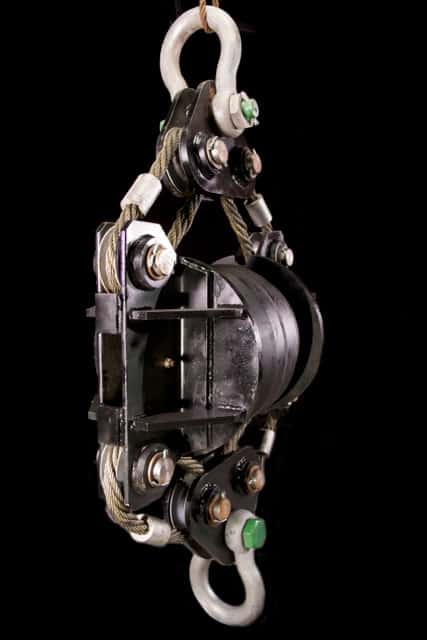Waterfront construction projects are uniquely challenging due to their sensitive environments and the complexities involved in building stable foundations in marine settings. As the demand for sustainable development along coastlines and waterways grows, the construction industry is focusing on technologies that minimize environmental impact while ensuring structural integrity. One such critical technology is the use of vibration dampers for marine pile driving. These devices play a vital role in achieving sustainable waterfront construction by reducing harmful vibrations, protecting marine ecosystems, and enhancing project efficiency.
Understanding the Challenges of Marine Pile Driving
Marine pile driving involves driving long piles into underwater substrates to support structures like piers, docks, bridges, and seawalls. Unlike terrestrial pile driving, marine environments present additional challenges such as water currents, delicate marine life, and the risk of disturbing nearby ecosystems. The powerful impact or vibratory forces needed to drive piles generate significant vibrations that propagate through the water and surrounding sediment. These vibrations can harm aquatic animals, damage nearby structures, and increase noise pollution, all of which pose concerns for sustainability.
What Are Vibration Dampers for Marine Pile Driving?
Vibration dampers for marine pile driving are engineered devices designed to absorb and reduce the intensity of vibrations generated during the pile driving process. These dampers are installed on pile driving equipment or between the hammer and pile, functioning to dissipate vibrational energy before it reaches the marine environment. Their purpose is twofold: to protect the environment from excessive vibrations and to enhance the safety and effectiveness of the construction process.
Environmental Benefits of Using Vibration Dampers for Marine Pile Driving
Sustainability in waterfront construction means minimizing adverse effects on the environment. Vibration dampers for marine pile driving contribute significantly to this goal through several mechanisms:
1. Protecting Marine Life
Vibrations from pile driving can disrupt the behavior and health of marine animals, including fish, mammals, and invertebrates. Species that rely on sensitive hearing for communication and navigation, such as dolphins and whales, are particularly vulnerable. By reducing the amplitude of vibrations, these dampers help create a safer underwater acoustic environment, mitigating stress and physical harm to aquatic life.
2. Preserving Sediment Stability
Excessive vibrations can cause sediment displacement or resuspension, leading to increased turbidity and potential damage to benthic habitats. Vibration dampers help stabilize the sediment by controlling the force transmitted during pile driving, protecting water quality and maintaining ecological balance.
3. Reducing Noise Pollution
Marine construction noise can travel great distances underwater, disturbing both wildlife and human activities like fishing and recreation. Vibration dampers help lower noise levels by absorbing vibrational energy, contributing to quieter and less intrusive operations.
Enhancing Construction Efficiency and Safety
Beyond environmental advantages, vibration dampers for marine pile driving improve the construction process itself:
-
Equipment Longevity: By minimizing shock and vibration transmitted to pile driving machinery, dampers reduce wear and tear, lowering maintenance costs and preventing costly breakdowns.
-
Precision and Stability: Controlled vibrations ensure piles are driven accurately, reducing the risk of misalignment and the need for rework.
-
Worker Safety: Damping vibrations lowers the transmission of harmful forces to operators and equipment, reducing fatigue and injury risk.
Innovations Driving the Effectiveness of Vibration Dampers for Marine Pile Driving
Recent technological advancements have enhanced the capabilities of vibration dampers:
-
Hydraulic and Pneumatic Dampers: These systems provide adjustable damping forces tailored to specific pile types and soil conditions, optimizing vibration control.
-
Smart Monitoring: Sensors integrated into dampers offer real-time feedback on vibration levels, allowing operators to adjust driving techniques dynamically for maximum efficiency and environmental protection.
-
Eco-Friendly Materials: Use of corrosion-resistant and sustainable materials in damper construction ensures durability in harsh marine environments while minimizing environmental footprint.
Case Studies: Successful Use of Vibration Dampers in Waterfront Projects
Several waterfront projects have demonstrated the positive impact of vibration dampers for marine pile driving:
-
In a large harbor redevelopment, vibration dampers enabled the construction team to comply with strict environmental regulations, protecting endangered marine species while completing the project ahead of schedule.
-
A coastal bridge construction project reported a significant reduction in underwater noise complaints from local communities, thanks to the integration of advanced dampers, improving community relations and project reputation.
Conclusion
Vibration dampers for marine pile driving are indispensable tools in modern sustainable waterfront construction. By effectively mitigating vibrations, these devices protect fragile marine ecosystems, reduce noise pollution, and improve the overall safety and efficiency of pile driving operations. As environmental regulations become more stringent and the demand for eco-conscious construction grows, the adoption of vibration dampers will continue to rise.









